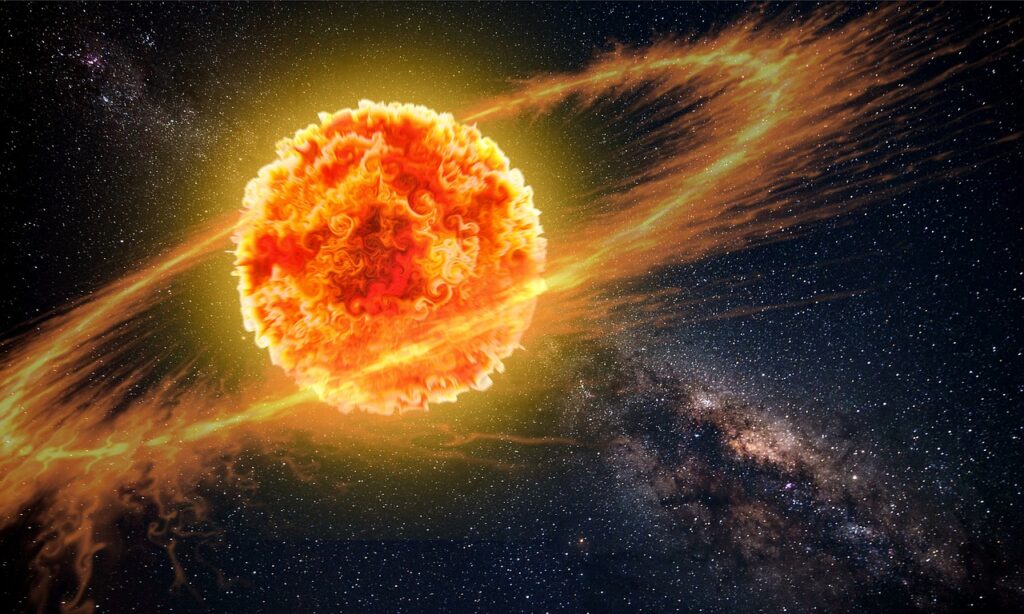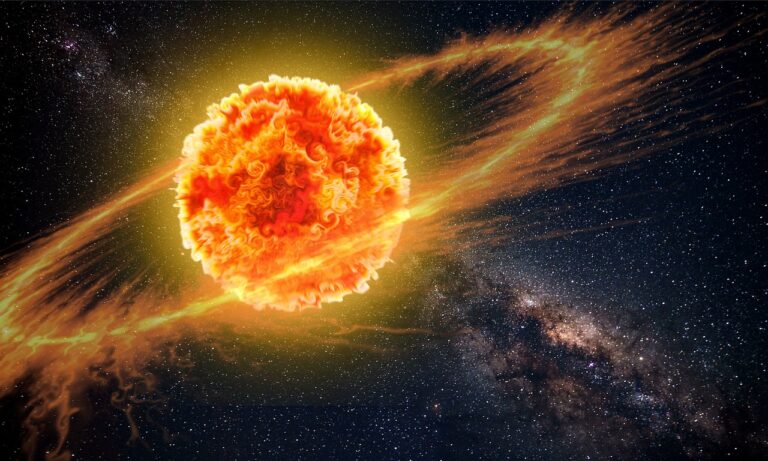The newborn Sun was forced out of its original cloud by a supernova outburst.
The newborn Sun was significantly accelerated after receiving an iron isotope enrichment from a strong supernova explosion. To explain the variations in meteorite composition, scientists developed a model of this process.

Mystery of the iron isotope in meteorites
Scientist Alan Boss from Carnegie University was able to develop a novel theory for the formation of the Solar System by explaining the variation in the isotopic makeup of various types of meteorites. There are several kinds of space pebbles that reach Earth. The most basic and typical of these are known as carbonaceous chondrites, and they have a high concentration of the isotope iron-60.
The radioactive isotope iron-60 is only created during a supernova explosion. It eventually transforms into cobalt-60. We can thus determine the time of meteorite formation by looking at the ratio of these isotopes.
Carbonaceous chondrites’ isotopic makeup suggests that the time between the supernova explosion and their production was no longer than 2 million years. That is, the gas condensed in the protoplanetary cloud that eventually gave rise to our Sun as a result of the supernova explosion.
How a supernova accelerated the Young Sun
The issue is that other kinds of meteorites don’t provide the same insight into how the Solar System formed. They have too little iron-60 in them. And this contradiction has baffled scientists for a very long time.
For many years, Alan Boss has been simulating the development of the solar system. Additionally, he was able to resolve the meteorite composition conundrum, which defies supernova theory, in one of his last calculations.
The most recent theory is that the protoplanetary cloud really got an initial supply of iron-60 and started to condense, eventually giving rise to the Sun. But soon after, the shock wave forced it into a different area that was deficient in iron isotopes, and there the remainder of the meteorites formed.
According to phys.org
Do not forget to share your opinion with us to provide you with the best posts !




0 Comments